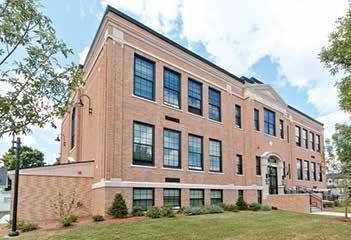
By Dalia Diaz
As I had stated, in a previous edition of Rumbo, many politicians in our City of Lawrence talk about the amount of support our children/students should have in eliminating barriers to have better schools and create better curriculum and support programs. However, those same politicians just talk and don’t walk the walk. I am not only writing about this current administration, but past administrations as well.
Previously we discussed how the lack of sidewalk access during snow storms affected the ability of our students to walk to schools. The lack of snow removal from the city sidewalks places our children, elderly and disabled in unsafe situation, especially when they must tread on the streets and share the road with vehicles of all kinds.
I’ve have researched other ways in which the City, currently and in the past, have played politics with our students. One of the behaviors of city politicians is to literally give away much needed space for classrooms and buildings.
In 2009, the City sold the Daniel Saunders School (located on Broadway) to make way for 16 housing units. Most of us know and probably understand that the housing units were created for Section 8 Subsidized Apartments. However, what was not advocated was the need for this school to be modified and rehabilitated for the need of our students. The transaction to sell this property left the Lawrence Public Schools in a bit of a bind – but the bind was not to be seen until much later.
Additionally, you’d think that the city would have respected its past, after all Daniel Saunders was a founder father of the City of Lawrence. Right across from the Saunders School was the Saunders Home Site which is now Metropolitan Credit Union.
We’ve also found out that the Saunders School was once provided to Isabel Melendez who’s “not non-profit” benefited from the Lawrence School Department print shop and who was housing her “not non-profit” organization for free.
Now Ms. Melendez is located in another school building. The building is the former General Donovan School at 50 Cross Street. This is yet another building that is much needed for our students to be learning. We understand the need for the type of service Ms. Melendez utilizes the space, but the fact of the matter is that this is a school building and should be utilized for the learning need.
Another prime example of giving school buildings away was the Haverhill Street School. It is now the Lawrence Family Development Charter Middle School. While this is certainly the type of operations that should be carried in a school building (learning), the building was sold back in 2004-05 to the Lawrence Family Development operated by Mr. Ralph Carrero shortly after he left the Lawrence Public Schools position of elected committee member. The City’s excuse was that it could not sustain further infusing of funding to maintain the building because it was too costly. Well, Mr. Carrero and his group infused funds and made the building pretty dam good-looking and functional.
Another example of not trying to even develop other school properties into schools happens to be the Holy Trinity site. The former Holy Trinity Church/School property on Avon and Trinity streets sold for $500,000 by the Roman Catholic Archdiocese of Boston to a local real estate investor who may turn some of it into condominiums. It could of easily could have been a building for students.
I could continue on the buildings that have been neglected by the city only to be sold off to the lowest bidder for political reasons. I can go on and on about the missed opportunities of city to acquire true building sites for our students, for example the St. Mary’s location that was sold to another private school. However, first we must hire a true Neighborhood Planner. This is what Neighborhood Planners do! Neighborhood Planner’s job is community planning, including the relationship between policy, economic investment, housing, preservation planning, and the design of our built environment.
At this moment, there is no doubt that the Lawrence Public Schools knows the upsurge of the amount of students each year. That will also be true for the upcoming school year. Bubbles have been created in a series of elementary grades that will put the test to the Lawrence Public Schools, a test that the city administration does not even take seriously. The current mayor just wants to create chaos so that he can sell properties to his friends or political buddies and get them rich. In the meantime, our students are the ones suffering for the lack of safe sidewalks, smaller class sizes and additional space for learning, among many other things.
There is no secret that the physical environment of school buildings and school grounds is a key factor in the overall health and safety of students. Studies have shown that student achievement can be affected either positively or negatively by the school environment. Policies and protocols must be in place to ensure food protection, sanitation, safe water supply, healthy air quality, good lighting, safe playgrounds, violence prevention, and emergency response, among other issues that relate to the physical environment of schools. A significant portion of this city’s schools are suffering from disrepair, caught in the tangle of tight budgets that leave little room for adequate classroom materials, let alone building maintenance.
This new non-elected school board should develop and ensure the implementation of plans for safe, healthy and well-maintained school buildings and grounds. The board should be empowered to deal with on-going maintenance and repair issues, as well as on-going and emerging health or safety issues related to the physical environment of schools and school grounds. But seeing that this board is mostly politically appointed people, I am going out on a limb to say that the city will most likely give up a few schools buildings.
As I stated earlier in this article, talk is just talk and no politician is walking the walk when it comes to our city’s school infrastructure debate. But a lot of walking has been completed when it comes to railroads bridges, vehicle bridges and highways, and housing generally get more attention — and command a more formidable lobbying presence.


